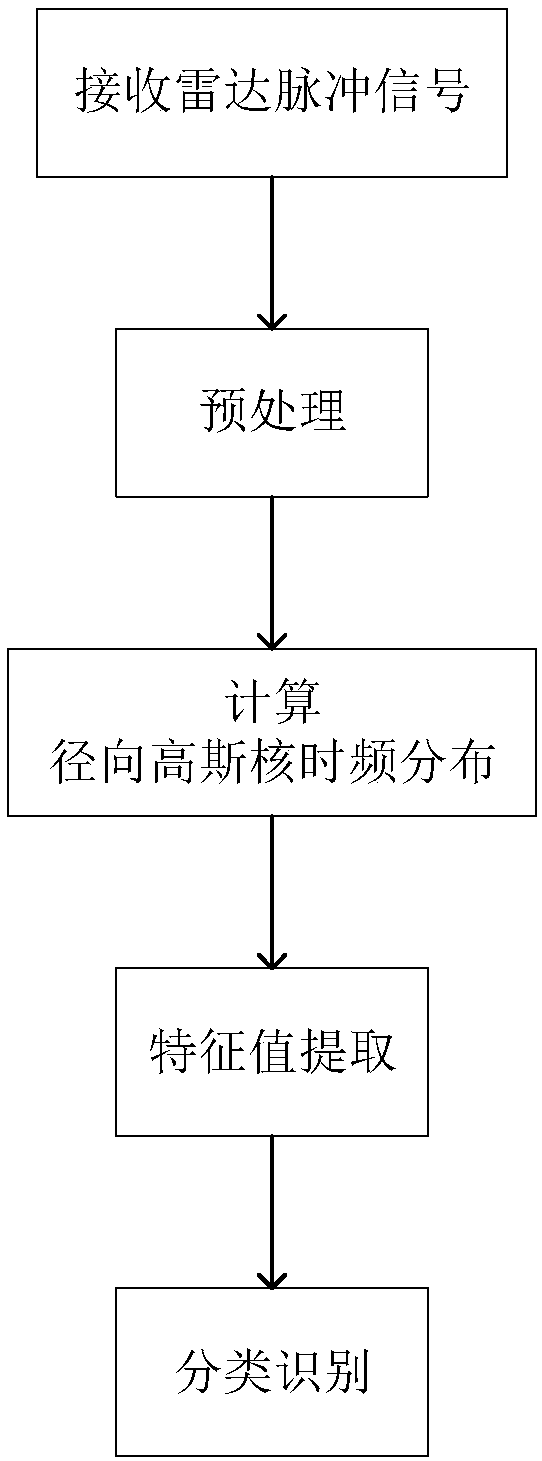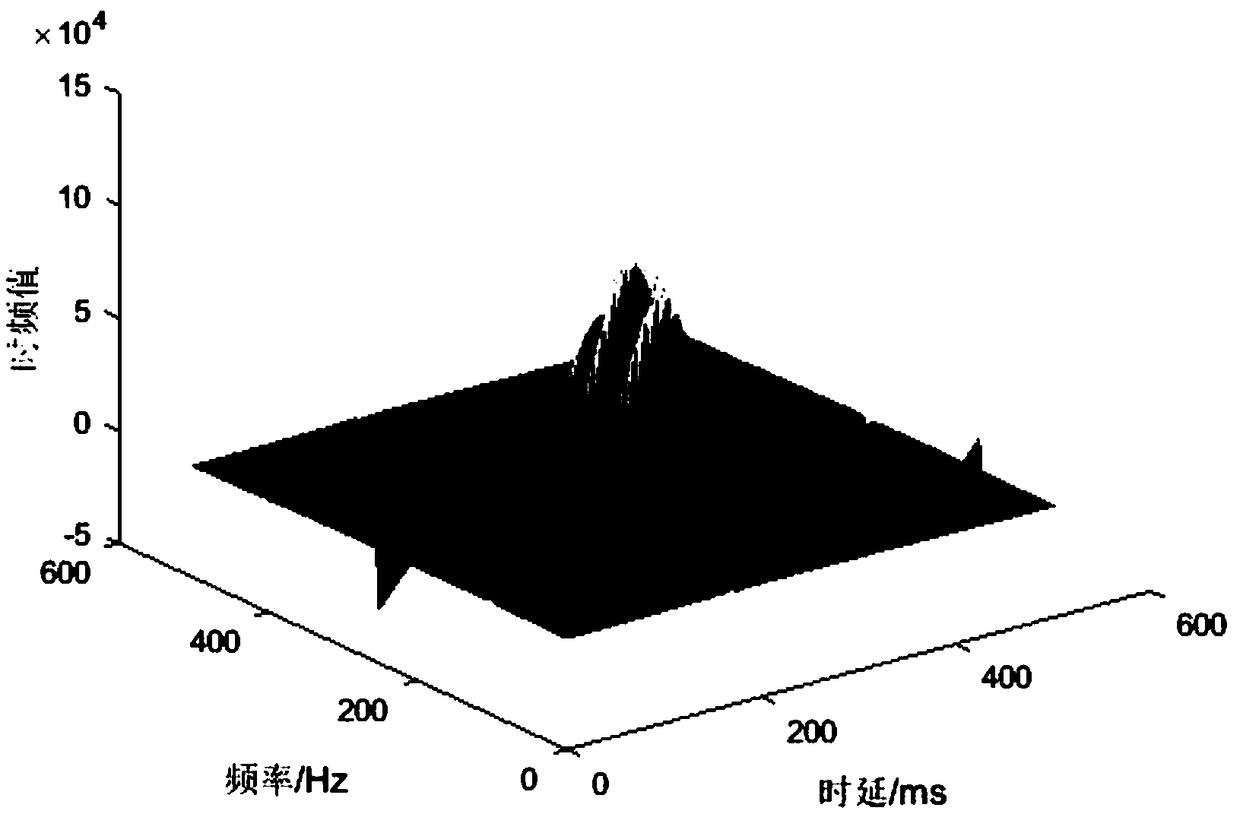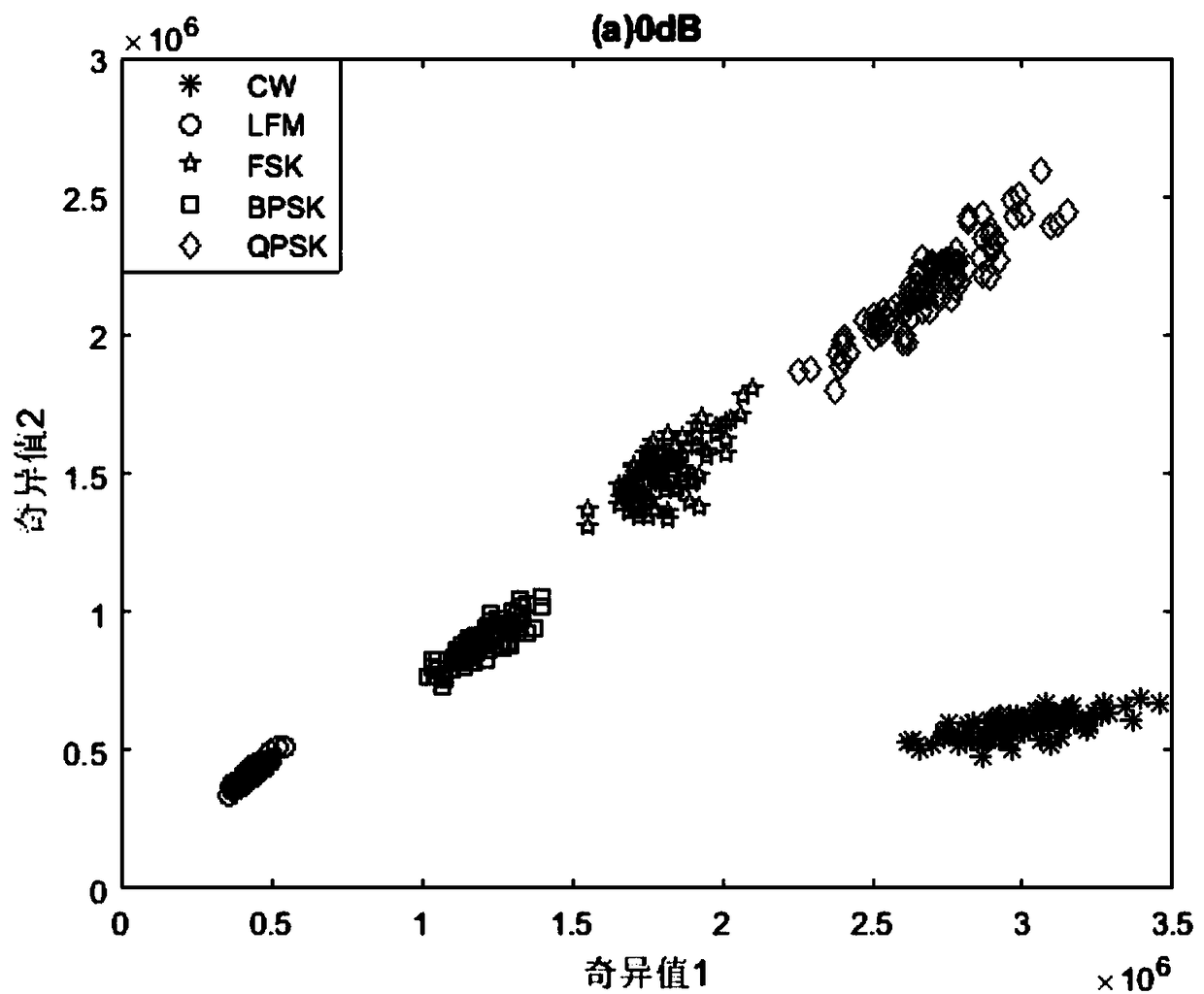Radar signal identification method based on singular value decomposition of time-frequency distribution
A singular value decomposition and time-frequency distribution technology, applied in the field of communication, can solve the problems of low recognition rate of radar signals and inability to realize effective recognition of radar signals, so as to improve the classification performance, overcome the small number of marked samples, and overcome the problems of radar signal recognition low rate effect
- Summary
- Abstract
- Description
- Claims
- Application Information
AI Technical Summary
Problems solved by technology
Method used
Image
Examples
Embodiment Construction
[0039] The present invention will be described in further detail below in conjunction with the accompanying drawings.
[0040] Refer to attached figure 1 , the specific steps of the present invention are further described in detail.
[0041] Step 1, the electronic reconnaissance receiver receives the radar high-frequency pulse signal in real time.
[0042] Step 2, preprocessing.
[0043] Using a low-pass filter, the radar high-frequency pulse signal is converted into an intermediate frequency signal.
[0044] Perform A / D sampling processing on the intermediate frequency signal to obtain the observation signal.
[0045] Step 3, calculate the radial Gaussian kernel time-frequency distribution of the observed signal.
[0046] Calculate the time-frequency value of each observed signal at each sampling time and each sampling frequency according to the following formula:
[0047]
[0048] Among them, P i (t, ω) represents the time-frequency value of the i-th observed signal...
PUM
 Login to View More
Login to View More Abstract
Description
Claims
Application Information
 Login to View More
Login to View More - R&D
- Intellectual Property
- Life Sciences
- Materials
- Tech Scout
- Unparalleled Data Quality
- Higher Quality Content
- 60% Fewer Hallucinations
Browse by: Latest US Patents, China's latest patents, Technical Efficacy Thesaurus, Application Domain, Technology Topic, Popular Technical Reports.
© 2025 PatSnap. All rights reserved.Legal|Privacy policy|Modern Slavery Act Transparency Statement|Sitemap|About US| Contact US: help@patsnap.com



